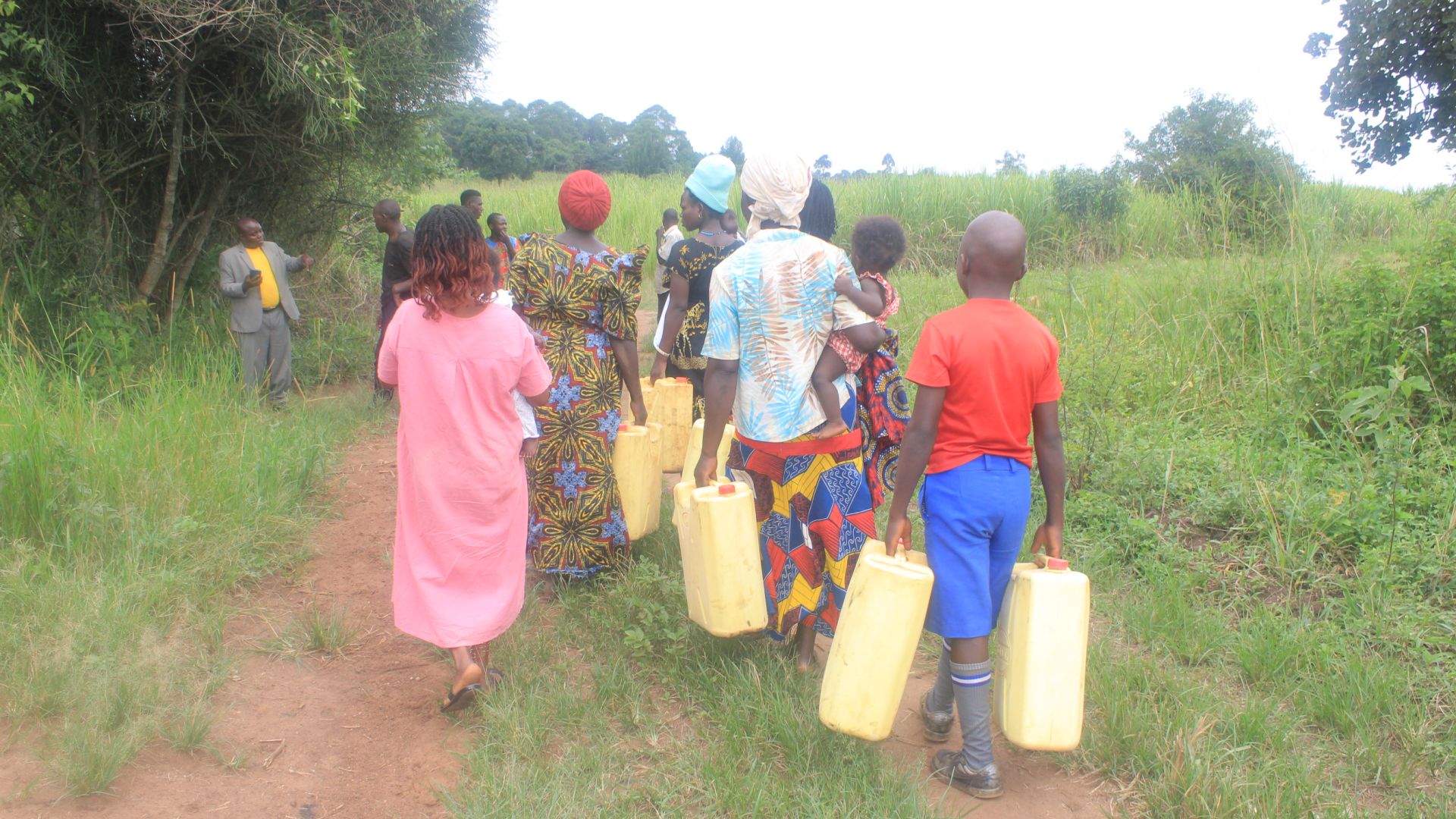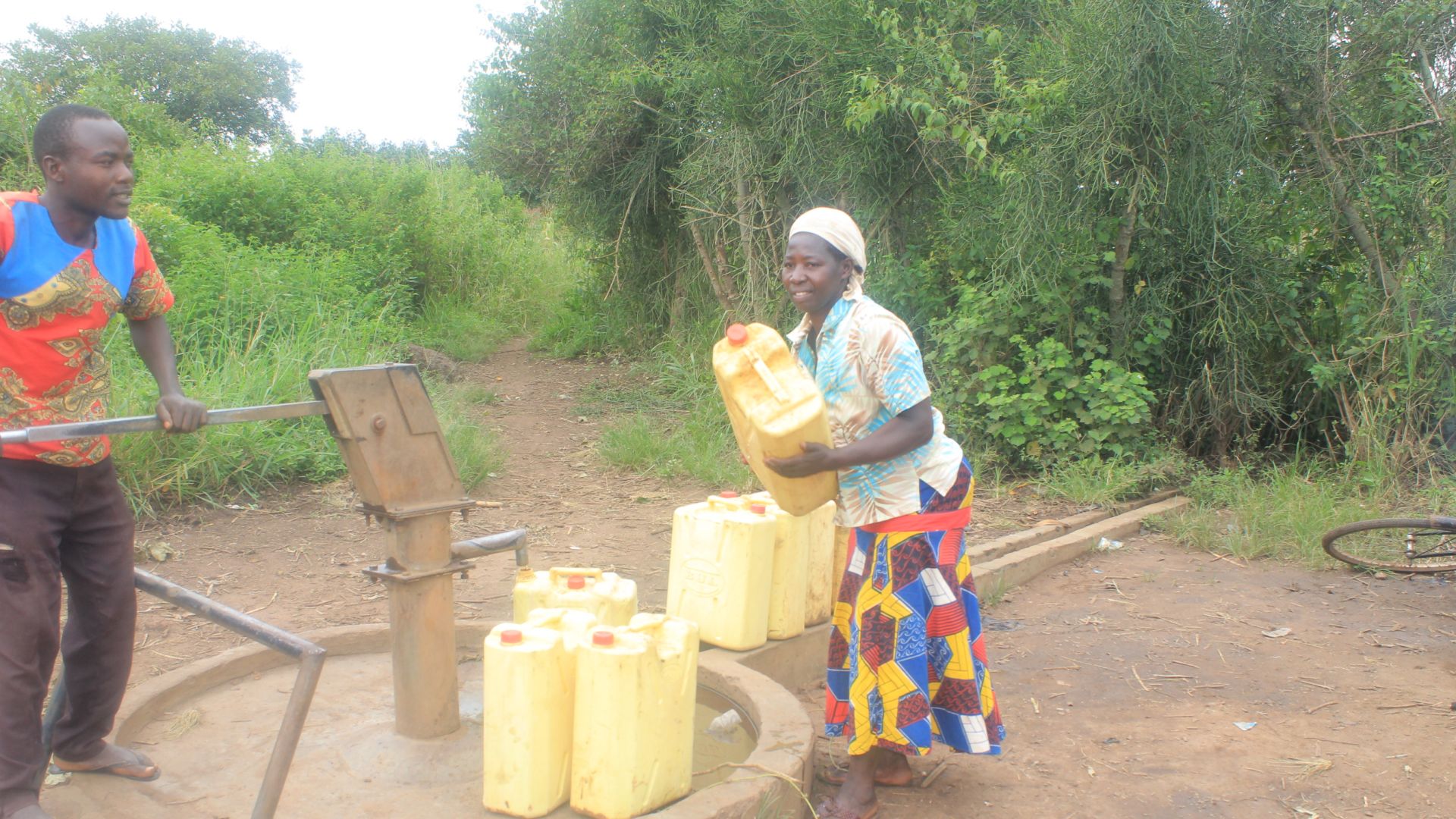In Kyabikuule Community, getting water is a daily struggle. For the past three years, the 275 community members have had no nearby safe or reliable water source. Their only option is a single borehole far from home, and it’s not enough.

Every day, children and adults walk a long distance, across a busy road, and climb steep, dusty paths to reach the faraway well. The long wait in line consumes even more of their valuable time. The pump is hard to use, and the water, while sometimes clear, can turn yellow in the mornings, raising contamination concerns.
Grace Nyandeera, a 44-year-old mother, is concerned for the well-being of her children.
"I am deeply concerned for my children’s safety because they have to cross a very busy road to fetch water. The heavy traffic and constant movement of vehicles put them at high risk of accidents every day," lamented Grace.

Grace waits to collect water at the faraway well.
However, without an alternative water source, they have no choice but to face the daily risk.
Grace clearly understands the importance of water for her and her family.
"Water greatly improves quality of life by supporting health, hygiene, agriculture, and daily household activities, ensuring communities thrive and individuals remain healthy and productive," declared Grace.

Grace carries water with her daughter.
She dreams of a day when limited accessibility to water is not a factor that holds them back from making progress in life.
"It will help reduce the distance traveled to fetch water. It will also lower the risk of accidents, especially for vulnerable community members. I will use the extra time to work in the garden and grow crops. I will have more time to rest and recharge. Meals will be prepared on time, ensuring my family is well-fed.
Despite these challenges, Grace and her community haven’t given up. They’ve reached out, asking for help to build a safer, closer water source. A new water point will bring relief, hope, and opportunities.
Steps Toward a Solution
Our technical experts worked with the local community to identify the most effective solution to their water crisis. They decided to drill a borehole well, construct a platform for the well, and attach a hand pump.
Well
Abundant water often lies just beneath our feet. Aquifers—natural underground rivers—flow through layers of sediment and rock, offering a constant supply of safe water. A borehole well is drilled deep into the earth to access this naturally filtered and protected water. We penetrate meters, sometimes even hundreds of meters, of soil, silt, rock, and more to reach the water underground. Once found, we construct a platform for the well and attach a hand pump. The community gains a safe, enclosed water source capable of providing approximately five gallons of water per minute. Learn more here!
Community Education & Ownership
Hygiene and sanitation training are integral to our water projects. Training is tailored to each community's specific needs and includes key topics such as proper water handling, improved hygiene practices, disease transmission prevention, and care of the new water point. Safe water and improved hygiene habits foster a healthier future for everyone in the community.
A Community-Wide Approach
In Uganda, we use a Community-Led Total Sanitation (CLTS) approach, which involves several meetings where community members evaluate their own hygiene and sanitation practices to encourage lasting change. During these sessions, natural leaders emerge, motivating the community to recognize and change unhealthy behaviors that affect everyone.
Communities then commit to ending open defecation before we install the water project. Every household builds a latrine to prevent disease and improve hygiene and sanitation in anticipation of their new water source. To support this effort, a Community Development Officer (CDO) is assigned. The CDO encourages each household to set up handwashing stations, animal pens, garbage pits, and dish-drying racks. These additions are crucial in preventing the spread of common diseases.

 Borehole Well and Hand Pump
Borehole Well and Hand Pump
 Rehabilitation Project
Rehabilitation Project
















